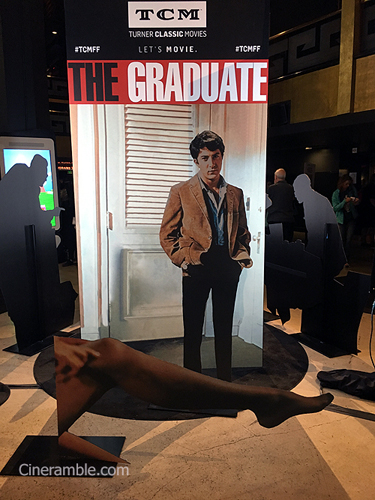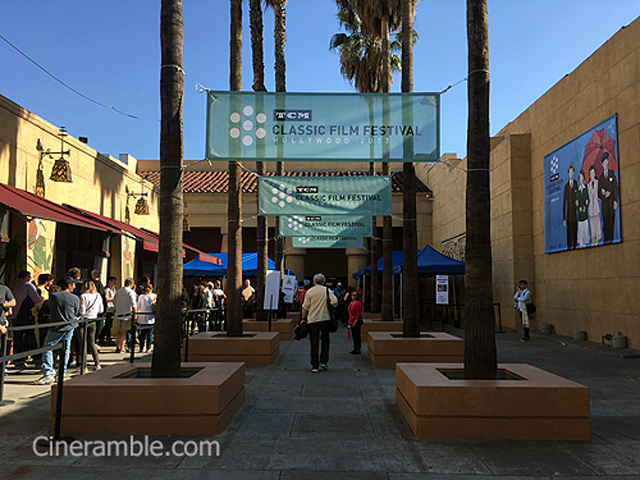
The Turner Classic Movies Channel (TCM) offers up one of the finest programming line-ups that you’ll ever find on cable television, especially if you are a classic movie fan like me. Knowing that their fan-base is strong and growing, TCM has given those of us in the Los Angeles area a special treat in their yearly film festival, held in the heart of Hollywood. Spread across several theaters on Hollywood Blvd. (The Chinese, the Egyptian, and the Cineplex of Hollywood & Highland), the TCM fest offers up four days of nothing but the best in classic cinema. In addition to seeing these classics on a big screen, those who attend are given the added treat of having their films introduced by notable celebrity figures who have some involvement in the film’s making, or are themselves enormous fans of the films they are introducing. Also, there’s also just the atmosphere of Hollywood alone that makes this festival unique. More than likely some of these movies probably had their world premieres in the very same venues, so the festival is not just a weekend of entertainment, but a dive into the history of cinema itself, with each grand old movie house acting as a living museum to cinema. This year marks the fourth in a row that I am documenting this festival for you, my readers. However, unlike previous years, I tried to do something different for this year’s fest, which was to cover all four days of the festival. I’m happy to say that I did get all four days in, having to manage it around my work schedule. It unfortunately gave me little down time to do anything else this weekend, hence why I’m writing this on a weekday, as opposed to my usual Saturday posts. Thankfully, with experience under my belt, I was able to schedule everything out in order to make it into all of my top choices each day, with only one roadblock in my way. So, let’s look at the TCM Classic Film Festival of 2017.
DAY #1 (APRIL 6, 2017)
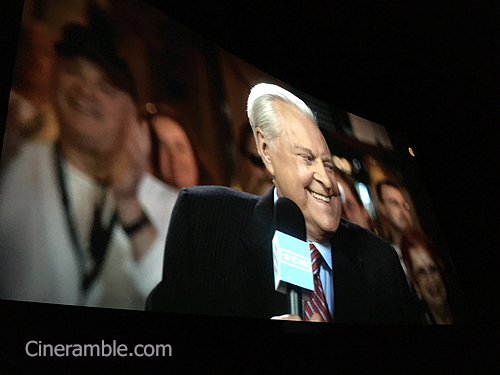
The festival runs a different theme every year to spotlight in their line-up of movies. This year, the theme was Comedy. Most of the marquee attractions this year were meant to be a good rundown of all the different eras of comedy in Hollywood, from Monkey Business (1931) with the Marx Brothers, to the work of Mel Brooks, Carl Reiner, and the Abrams/Zucker parody flicks. Even the more recent Christopher Guest mockumentaries were spotlighted. It makes sense that this was a running theme since the guests of honor at this year’s hand-print ceremony in front of the Chinese Theater were comedy legend Carl Reiner and his son, director Rob Reiner. This festival was also significant this year being the first without iconic TCM anchor Robert Osborne, who has long been the face of the channel. His passing a couple months ago could be felt across the board at this year’s fest, with several of the TCM staff sharing their fond memories. Each of the opening night films included a brief memorial video of Robert that was very well done and appropriate as a way of stating his importance to the festival as a whole. The opening night also included a special red carpet screening of In the Heat of the Night (1967), which celebrates it’s 50th anniversary this year. In attendance for this showing, TCM brought in director Norman Jewison, composer Quincy Jones, producer Walter Mirisch, and stars Sidney Poitier and Lee Grant. Unfortunately, standby tickets were unavailable for this showing, and since I was limited to standby seating the whole festival, I couldn’t go in myself, as much as I wanted to. Instead, I opted for a screening of a classic movie I had never seen before; the Bette Davis film Jezebel (1938).
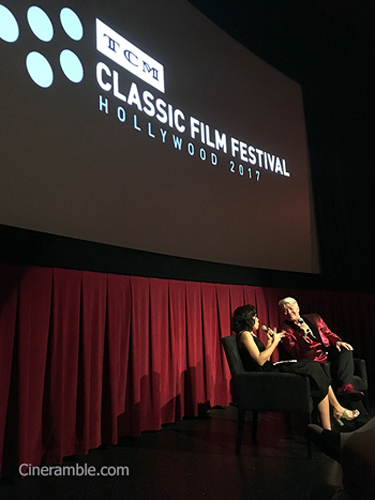
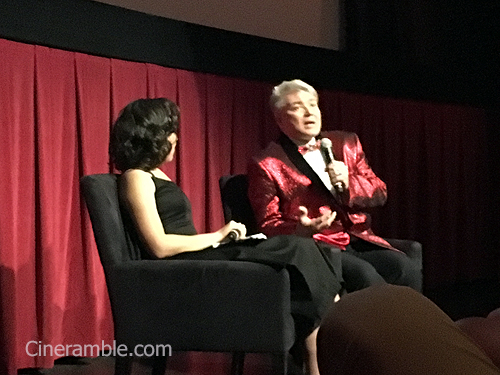
The early evening screening of Jezebel took place in one of the smaller auditoriums in the Chinese Multiplex theater in the Hollywood & Highland complex. Because of the limited space, fewer seats were available, and I just barely made it in from the standby line. All that were left were front row seats, which were not at a particularly good angle for watching the film. They did however give me a good, up close view of the pre-show introduction. Before the movie, TCM personality Tiffany Vazquez walked on stage to introduce the very enthusiastic (and flashy) guest speaker, Richard Skipper; an east coast journalist and producer who was invited to speak at this festival after winning a contest. Richard spoke of his fan-hood for Ms. Bette Davis and his love of the movie, Jezebel, which we learned from his speech was a consolation film for Bette after she was turned down for the role of Scarlett O’Hara in Gone With the Wind (1939). He also talked about how Bette got along with director William Wyler and co-stars Fay Bainter and Henry Fonda. Interesting enough, we also learned from the historical background that Fonda had to leave the film immediately after it wrapped in order to be there for the birth of his daughter, Jane. It was a thankfully information filled introduction from a true fan that helped us appreciate the movie even more. For me, I enjoyed it, but couldn’t help but think of Gone With the Wind the whole time, and how much grander it is.
From there, I tried to rush my way down the busy, tourist filled sidewalks to the Egyptian Theater a few blocks away. Thanks to a heads up alert from social media, I learned that the theater had a special screening of Hitchcock’s The Man Who Knew Too Much (1934) planned, utilizing a brand new projection process that allows the theater to screen ultra-sensitive nitrate film stock. That alone would have interested me, but the alert also indicated that director Martin Scorsese was going to be there to introduce the movie himself, and discuss the preservation of nitrate film, which is a particular passion of his. I managed to make it outside the Egyptian, and received a number for the standby line. When it got close to the start of the show, the festival crew let in only a small handful of standby tickets holders. After twenty or so people, it was announced that there would be no more let in, and I unfortunately was among those left outside. It would have been neat to have seen Scorsese in person, but this is the unfortunate outcome that you have to expect when you roll the dice waiting in standby. It was worth the try in any case. After that, I decided to skip all the other available screenings, and call it a night. It was an opening night disappointment, but there was plenty of festival still left.
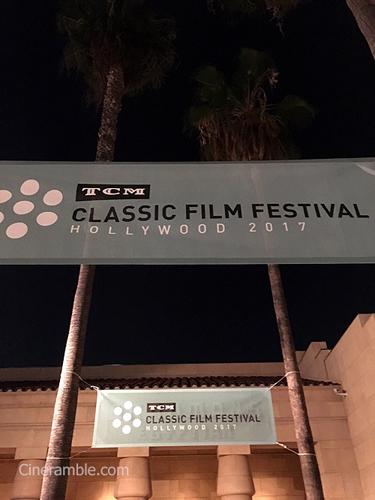
DAY #2 (APRIL 7, 2017)
Coming straight from work, I made my way to the Chinese cineplex again to catch a screening of James L. Brooks’ Broadcast News (1987). I was thankfully there in time to get a good seat and it was also bless-fully in one of the larger auditoriums, making seats readily available for all standby tickets. Before the show, TCM host Ben Mankiewicz arrived to conduct the opening introduction. Now, I should point out that at this point in the festival, the souvenir guide books indicated that director James L. Brooks was going to be the pre-show guest. But, in front of us on stage, there were three chairs waiting; one for Ben, one for James, and one for someone we didn’t know. Well, that third chair was saved for comedian and actor Albert Brooks, who was a surprise last minute addition. This surprise almost makes up for missing out on Scorsese the night before. Both actor Brooks and director Brooks discussed their experience making the film, including the lengthy amount of research that went into accurately portraying the inner workings of a broadcast newsroom. They talked about co-stars Holly Hunter and William Hurt, as well as how this movie reflects on the state of media today. Albert naturally gave the audience quite a few laughs to enjoy, but James L. Brooks was equally as entertaining in this intro. Seeing the movie itself was a first time for me, and I quite enjoyed it as a whole; particularly with the stellar performances. It was a good start off to the day, but my primary goal was to make it into the nighttime showing in the Chinese Theater immediately after.
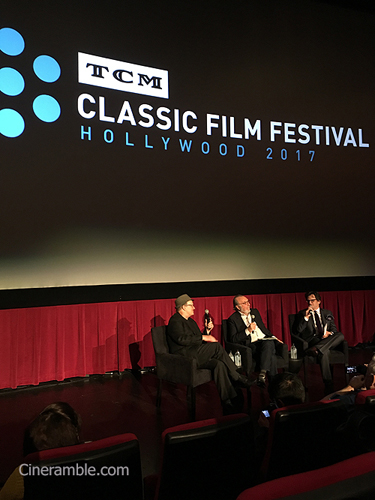
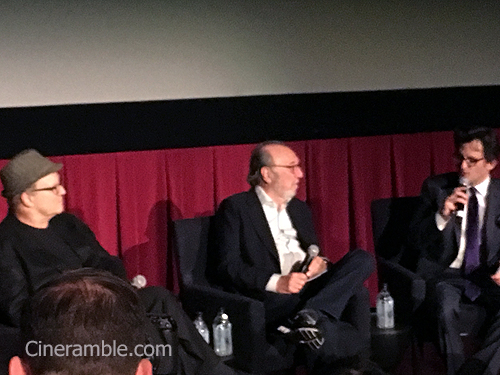
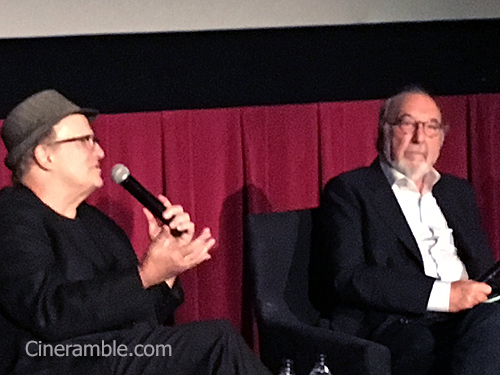
The reason I desperately wanted to get into this next show was because it was going to feature one of my all time favorite filmmakers; comedy legend Mel Brooks. His spoof of Hitchcock films, High Anxiety (1977), was the featured show, but it was really seeing Mel live in person that interested me. I had managed to catch an appearance of him several festivals back, but it was in one of the smaller venues and not from a great viewing advantage. Thankfully, I got into this screening, which is thankfully in the very large Chinese Theater, and I managed to get a close up seat only a few rows from the front of the venue. Mel Brooks, at 90 years old today, is in remarkable shape, and is just as full of comedic energy as he has ever been. Ben Mankiewicz was there to conduct the interview, but Mel completely took control and did most of the talking himself, leading poor Ben to not know where the interview would go next. Mel did offer up some interesting stories, like his meeting with Alfred Hitchcock and his pitch to him about the movie High Anxiety. Hitchcock loved the final film by the way. He also discussed working with his co-stars, including Madeline Kahn, Cloris Leachman, and Harvey Korman. More than anything, it was just fantastic to see a comedy legend still be able to make all of us laugh, and show that old age hasn’t slowed him down at all. It was also pleasing to watch High Anxiety on a big screen. I’ve watched the film before, but not like this, and never with a full audience either. So, I went 2 for 2 on day 2 and my hopes were up for the rest of the festival.

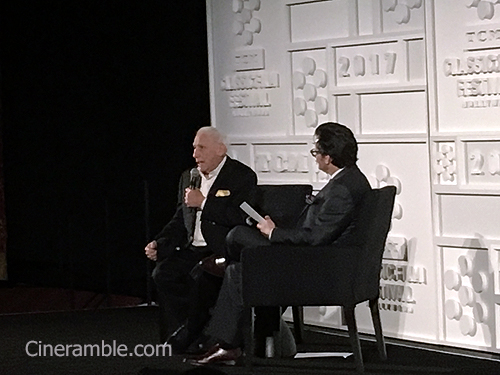
DAY #3 (APRIL 8, 2017)
Because of my work schedule, I was unavailable to attend most of the morning shows, which included some very promising screenings I would have liked to have attended. This includes a screening of This is Cinerama (1952) in it’s original format in the Cinerama Dome, and of The Jerk (1979) with director Carl Reiner in attendance. I haven’t seen the 90 year old Reiner yet, and something tells me that fewer chances will come my way in the future, so this was unfortunate. Still, there were a few more promising screenings that interested me on this day. I got to the Chinese complex again and received my standby ticket for a screening of Christopher Guest’s 2000 classic Best in Show. For this screening, we were privileged to have four members of the cast there to speak before the film. On stage there were actors John Michael Higgins, Jim Piddock, Bob Balaban, and Fred Willard. The longtime collaborators discussed their improvised style of comedy, which is a trademark of Guest’s mockumentaries, and what they brought to their own characters. Higgins talked about what it was like playing one half of the film’s sassy gay couple (opposite Michael McKean), and Willard and Piddock talked about what it was like playing the hilariously mismatched color commentators in the fictional dog show competition. Amazingly, we learned that their scenes were all shot in one day. Balaban unfortunately couldn’t speak because he was battling laryngitis, but still his presence there was appreciated. I had seen the movie before, but again, watching it in a theater with an audience gave it an extra bit of enjoyment. From there, it was off to the Chinese again.
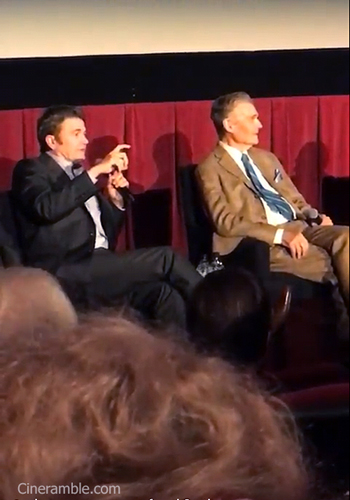
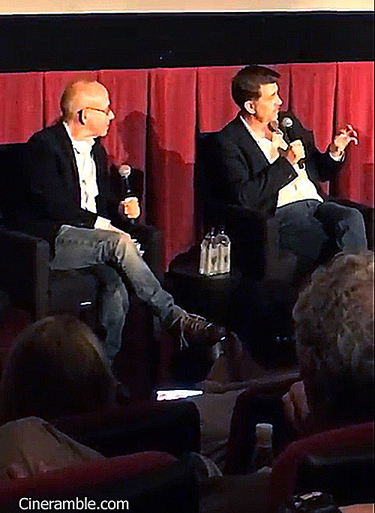
The nighttime presentation at the Chinese Theater on this third day was the universally beloved Mike Nichols film, The Graduate (1967). Another film celebrating it’s 50th anniversary this year, the film was a popular draw this night. Thankfully, my Best in Show screening finished with enough time for me to get in the standby line for this film. I managed to get a pretty good seat in the theater; not too close and not too far. It gave me a good view of the stage up front, and a good view of the screen, which is quite big (it’s built for screening IMAX). For this show, we were privileged to be joined by the film’s screenwriter, Buck Henry. Buck, while still witty at times, clearly wasn’t as spry as Mel was the previous night, but at the same time you can excuse him for that. Ben Mankiewicz kept the interview moving along, despite the fact that Buck was giving him long stares most of the time (which were sometimes funny in of themselves), but some interesting tidbits did come out in the interview. We learned about what it was like working with Mike Nichols as well as stars Dustin Hoffman and Anne Bancroft. We also learned about stars who nearly made it into the movie, like Robert Redford and Gene Hackman (who in fact was fired right before filming began). It was pleasing to see a legendary writer like Buck Henry participate in this festival, even in his old age which has more or less made him a little more ornery than usual. It wasn’t my first time seeing this movie, but again, on a big screen, it’s a whole other experience and what can I say other than this is still a classic for all times. And with that, another day down, with one left to go.

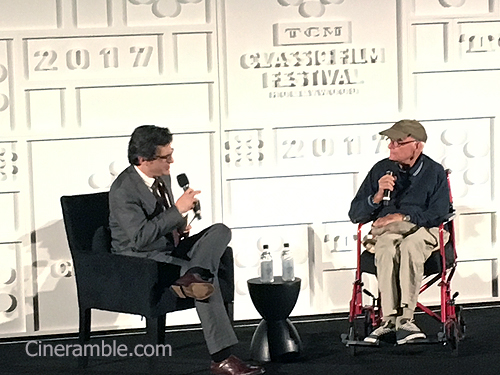
DAY #4 (APRIL 9, 2017)
This final day gave me something that none of the others had, and that was a wide open schedule. A day off work meant that I had the entire day to catch anything that I wanted. So, to start the day, I made my way to the Chinese complex to catch a showing that I knew would have some significance at this year’s festival. It was a screening of Postcards from the Edge, a movie written by the late Carrie Fisher, loosely based on her experience with drug addiction and growing up under the shadow of a famous mother. Starring Meryl Streep and Shirley MacLaine as the fictional daughter and mother respectively, the movie is a fascinating window into Carrie’s relationship with her real-life mom Debbie Reynolds, who also shockingly passed away only hours after her daughter last year. This gives the movie an added poignancy and for a first time viewing on my part, this film truly was one of the highlights of this year’s festival. After the movie, Ben Mankiewicz welcomed on stage two special guests. One was Todd Fisher, brother to Carrie and son to Debbie, as well as previously unannounced surprise guest, actor Richard Dreyfus, who had a small part in the film. The discussed the film very little, and of course devoted most of the interview to sharing memories of the two legends. Dreyfus, who was a close friend to Carrie, even broke down into tears during the interview, showing how the grief is still affecting him today. Todd shared some interesting family stories as well, and stated how much of the film captured the essence of both of them. It was a really enriching experience, and one that I felt great about choosing for this year’s festival.
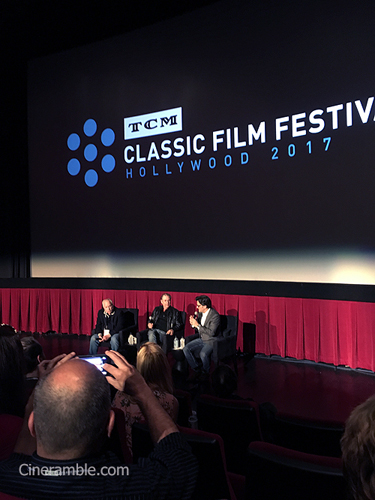
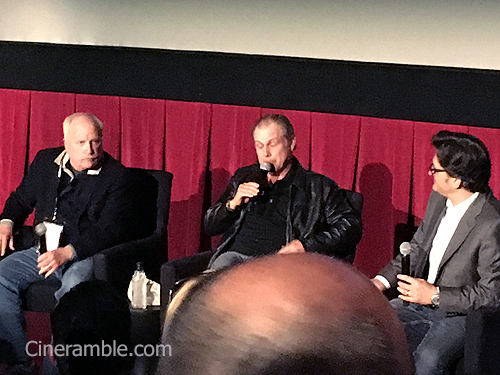
From there, I made my way to the Egyptian Theater and had better luck this time getting in. It was for a screening of the Ryan O’Neal and Barbara Streisand screwball comedy What’s Up Doc? (1972), directed by Peter Bogdanovich. Bogdanovich was himself there to introduce the movie, and it was a special treat to see him in person, knowing his contributions to both film-making and film criticism. He talked about what it was like working in such a different style of comedy than what he was used to at the time, just coming off of the Oscar-winning The Last Picture Show (1971). He also talked about working with O’Neal and Streisand, as well as placing Madeline Kahn in her first ever screen role; one in which she becomes a scene-stealer. He also talked about all the challenges he faced filming the climatic chase scene through the streets of San Francisco, which included several instances where they caused real physical damage to some of the city’s infrastructure. He finished his interview by treating us to his Jimmy Stewart impression, which was not bad. The movie itself was a first time viewing for me, and I’m happy to say that I enjoyed it. I got more out of the supporting cast than I did from the main stars to be honest, but what really impressed me was the confident direction from Bogdanovich, which really captured the screwball style of comedy that was perfected so well in the 30’s and 40’s. After that, there was only one film left to go.
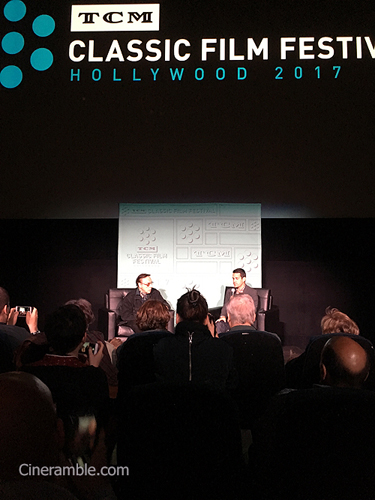
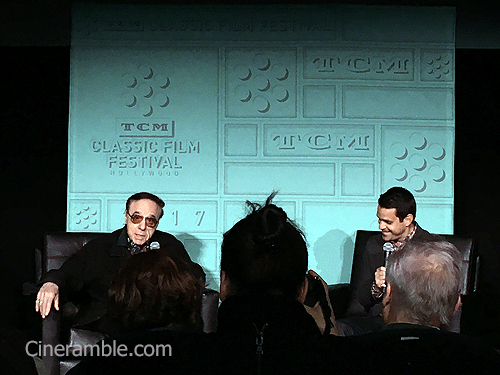
I chose to remain at the Egyptian for my final film, mainly to experience a screening of one of these heralded nitrate prints that the festival was spotlighting so strongly. I tried to the first night screening with Scorsese in attendance and failed, and the second and third nights conflicted with other movies I wanted to see. Those other two prints were of the classic Otto Preminger noir drama Laura (1944) and the Powell and Pressburger technicolor classic Black Narcissus (1946). The final night’s nitrate screening belonged to the Ginger Rogers musical extravaganza Lady in the Dark (1944). This technicolor film looked very interesting on a nitrate print, which had a smoothness to the frame rate that was noticeably different than celluloid. The colors also had a different hue to them, more muted than most other technicolor prints I’ve seen. The film itself was a mixed bag however. Actress Rose McGowan arrived to introduce the movie beforehand and shared with us her appreciation for the artistry of the movie, particularly with the art direction in the dream sequences and the stunning costumes designed by Edith Head. However, she did pre-warn us of some of the more outdated social attitudes presented in the film, which are a bit problematic. Watching the movie, I can see what she meant, because the movie is hilariously old-fashioned. The film is so blatantly misogynistic and ill-informed about the science of psychoanalysis that you’ll just laugh throughout at just how politically incorrect this movie is today. Well, at least we were given warning beforehand. That made for an interesting finish to my festival experience. At least I got a sense of what nitrate film projection looks like and it’s something that I hope continues in future festivals.
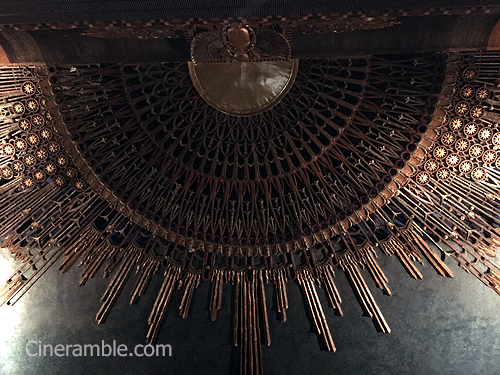
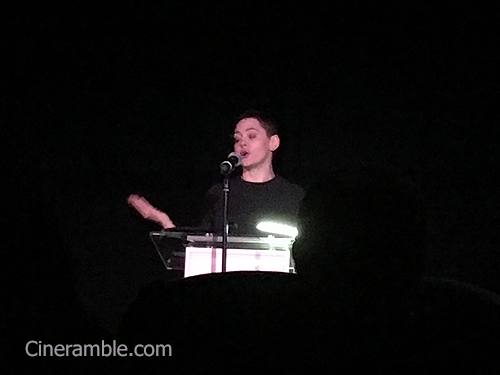
And with that, the TCM Film Festival of 2017 comes to a close. I honestly felt very happy to have finally gotten in the full four days of the festival. Sure, I had to work it around my work schedule, which prevented me from seeing some of the films I was interested in, but for the most part, I did get to see what I wanted. The only disappointment in the whole thing was not getting into that screening where Scorsese was going to premiere, and even there I still was almost successful. Overall, I caught 8 movies total, which is not bad at all, and 5 of them were first time viewings. Buying a festival pass would have given me better access and a better choice of seats, but my success rate was still good in the standby line, and was an especially good option for someone who’s on a budget like me. I was especially happy to see legends like Mel Brooks and Buck Henry live in person, as well as see other greats like the Best in Show cast and Peter Bogdanovich. Also, the Postcards from the Edge discussion centered on remembering Debbie Reynolds and Carrie Fisher was an especially worthwhile moment. But, even apart from the movies themselves, I also just enjoyed talking to other people in line who like myself are huge fans of classic cinema. I was talking to a couple guys in line just about stuff like the philosophical meanings behind the films of Stanley Kubrick, and in another line, I met an older couple who said that their first time seeing The Graduate was on one of their first dates in high school. It’s a shared communal experience like that which make festivals like TCM’s so enriching. I hope to get in a full experience in like this again next year, so until then, I hope you appreciated my lengthy report. And please, watch and support classic cinema whenever you can.
